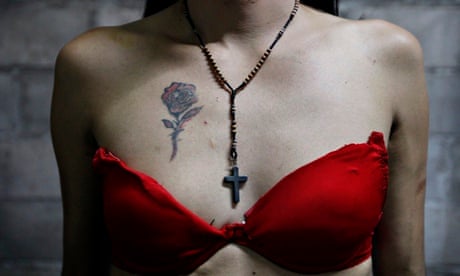As a genre, teen fiction doesn't have a great record when it comes to writing about gender and sexuality. For a long time it would have been almost impossible to walk into a bookshop or a library and find anything in the children's or teen sections which even had a gay character. Given that over three million people in Britain are gay, writers of teen fiction clearly haven't been doing a good job addressing these issues.
But in the last few years, things have been getting better. Books which specifically address gay themes, like the John Green and David Levithan collaboration Will Grayson, Will Grayson, have sold well in recent years, and strong, gay supporting characters, like Patrick in The Perks of Being a Wallflower, are more common too.
But there's still one topic that affects the lives of quite a few young people which very few writers have had the courage to touch: transgenderism. A person who is transgender (or trans) is anyone who feels that the sex assigned to them at birth is incorrect or fails to describe them. Trans individuals can often live as members of the opposite sex to the one they were originally assigned, or identify as trans because their sexual anatomy doesn't fit the normal definition of male or female. It is estimated that as many as one in every 500 people are transgender.
Unfortunately, there is still a lot of discrimination towards trans people, and most face great hardships on a regular basis; from public harassment to unemployment; family rejection to depression and suicide. Yet there have been a handful of authors who have dared to write about transgenderism and the struggles associated with it. I set out to read and review two of these books for Amnesty's Teen Takeover of the Guardian Teen Book Site, and here's what I found…
Luna by Julie Anne Peters
Luna was published in 2004 it was the first YA novel ever to feature a transgender main character. The story follows an American family and is told from the perspective of a teenage girl, Regan, whose brother Liam is transitioning from male to female. Liam has known all his life that he was born in the wrong gender, but it is only at night that he can transform into his true self: Luna. While Liam is miserable and feels trapped, Luna is happy and free. But this secret, that only the two siblings know, can't be told to anyone else. Their dad wants his son to follow in his footsteps and would never accept that Liam wanted to be anything other than a man. No one at school would understand either, perhaps not even Liam's best friend.
The book follows Liam's struggles with his gender, but it does so from the outside through the eyes of Regan. She feels the burden of Liam's secret almost as strongly as he does and struggles to live a normal life while trying to help him. Her relationship with a new boy at school, Chris, offers her a chance at finally fitting in, but it comes at a difficult time for Liam. He is finally beginning to transition, to move from being Liam to Luna in public, and life becomes very complicated for Regan. She is faced with the choice between her own wishes and happiness and the needs of Liam.
The way that Peters develops and explores her characters is superb, and she skilfully brings out the emotion in the struggles that Liam/Luna faces. From Luna's public harassment to her struggles with her parents, the novel feels as though it could have been a true story. The book does a great job in outlining what transgenderism is all about. Through flashbacks to Liam's early childhood, we get a sense of how strong Liam's need to transition is, how he has always been a girl trapped in a boy's body. The novel is eye-opening for young people – and yet it's also simply a great read.
I am J by Cris Beam
Beam's novel has a lot in common with Luna, but shows us transgenderism from a completely different perspective. In Luna we see the difficulties of a trans character from a sibling's point of view; in I am J, Beam puts us right inside the head of J, a genetic girl who wishes to become male, and allows us to understand what this character is thinking and feeling.
Deep down, J is male and the novel even refers to J as him throughout. He is teased for dressing in boy's clothes at school and gives up his great hobby swimming because of his hatred of his female body. J is trapped and needs to escape, needs to be accepted.
The story follows J's progress as he, like Luna, begins to transition. J is desperate to receive his first testosterone injection, to physically become the man he knows himself to be, but he has to overcome numerous obstacles which stand in his way. When J runs away from home it sets in motion a series of events which will give him the courage to make the change in his life that he so desperately needs.
Like Luna, I am J also makes great use of flashbacks to show how J's gender issues have developed. These two books complement each other well and are worth reading side-by-side. Their similarities highlight the common struggles of trans people, from the everyday dilemmas of gendered clothes and different pitch voices to the challenge of passing as a certain gender in public. But the differences between the two books also reflect the wide scope of transgenderism and how it affects different people in different ways.
These books will undoubtedly alter the way you think about gender and are a powerful educational tool. But they are both also enjoyable and moving reads in their own rights. Literature is all about struggle: the difficulties transgender people face everyday are some of the greatest struggles affecting young people today. If you get the chance, both books are well worth checking out.



